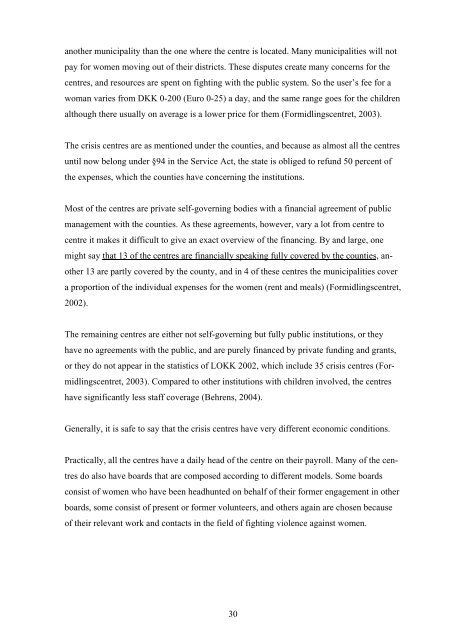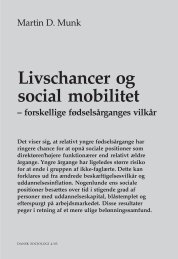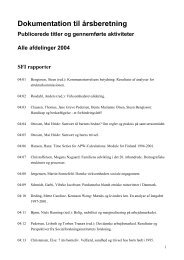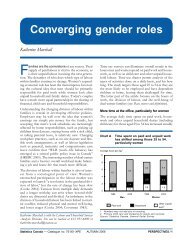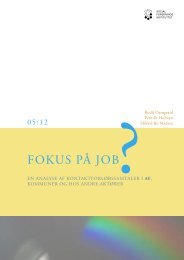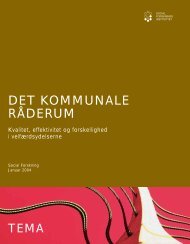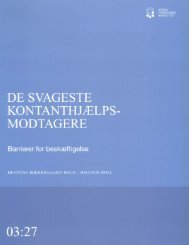Shelters in Denmark For Battered Women - European Commission
Shelters in Denmark For Battered Women - European Commission
Shelters in Denmark For Battered Women - European Commission
You also want an ePaper? Increase the reach of your titles
YUMPU automatically turns print PDFs into web optimized ePapers that Google loves.
another municipality than the one where the centre is located. Many municipalities will not<br />
pay for women mov<strong>in</strong>g out of their districts. These disputes create many concerns for the<br />
centres, and resources are spent on fight<strong>in</strong>g with the public system. So the user’s fee for a<br />
woman varies from DKK 0-200 (Euro 0-25) a day, and the same range goes for the children<br />
although there usually on average is a lower price for them (<strong>For</strong>midl<strong>in</strong>gscentret, 2003).<br />
The crisis centres are as mentioned under the counties, and because as almost all the centres<br />
until now belong under §94 <strong>in</strong> the Service Act, the state is obliged to refund 50 percent of<br />
the expenses, which the counties have concern<strong>in</strong>g the <strong>in</strong>stitutions.<br />
Most of the centres are private self-govern<strong>in</strong>g bodies with a f<strong>in</strong>ancial agreement of public<br />
management with the counties. As these agreements, however, vary a lot from centre to<br />
centre it makes it difficult to give an exact overview of the f<strong>in</strong>anc<strong>in</strong>g. By and large, one<br />
might say that 13 of the centres are f<strong>in</strong>ancially speak<strong>in</strong>g fully covered by the counties, another<br />
13 are partly covered by the county, and <strong>in</strong> 4 of these centres the municipalities cover<br />
a proportion of the <strong>in</strong>dividual expenses for the women (rent and meals) (<strong>For</strong>midl<strong>in</strong>gscentret,<br />
2002).<br />
The rema<strong>in</strong><strong>in</strong>g centres are either not self-govern<strong>in</strong>g but fully public <strong>in</strong>stitutions, or they<br />
have no agreements with the public, and are purely f<strong>in</strong>anced by private fund<strong>in</strong>g and grants,<br />
or they do not appear <strong>in</strong> the statistics of LOKK 2002, which <strong>in</strong>clude 35 crisis centres (<strong>For</strong>midl<strong>in</strong>gscentret,<br />
2003). Compared to other <strong>in</strong>stitutions with children <strong>in</strong>volved, the centres<br />
have significantly less staff coverage (Behrens, 2004).<br />
Generally, it is safe to say that the crisis centres have very different economic conditions.<br />
Practically, all the centres have a daily head of the centre on their payroll. Many of the centres<br />
do also have boards that are composed accord<strong>in</strong>g to different models. Some boards<br />
consist of women who have been headhunted on behalf of their former engagement <strong>in</strong> other<br />
boards, some consist of present or former volunteers, and others aga<strong>in</strong> are chosen because<br />
of their relevant work and contacts <strong>in</strong> the field of fight<strong>in</strong>g violence aga<strong>in</strong>st women.<br />
30


